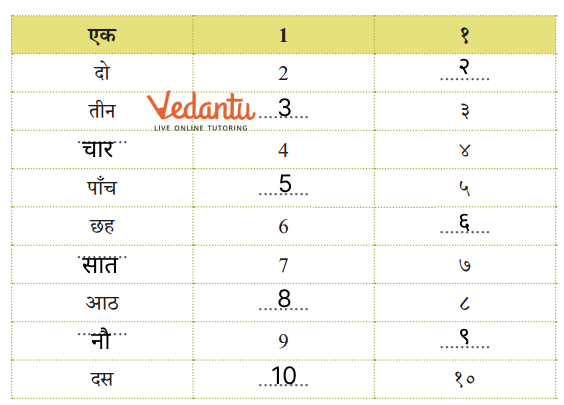NCERT Solutions for Class 3 Chapter 3 Kitne Pair? Hindi (Veena) - FREE PDF Download
FAQs on NCERT Solutions for Class 3 Hindi Chapter 3 Kitne Pair?
1. What key learning points does Class 3 Hindi Chapter 3, "Kitne Pair?" emphasise?
The chapter emphasizes understanding the concept of counting feet of different animals accurately in various contexts.
2. In what ways do Class 3 Hindi NCERT Solutions improve comprehension of the chapter?
NCERT Solutions breaks down complex ideas into simpler parts, allowing students to grasp the main concepts without confusion.
3. What activities are included in Class 3 Hindi Chapter 3 to engage students?
Chapter 3 includes counting exercises, and hands-on activities that make learning interactive and enjoyable for students.
4. How do these Class 3 Hindi solutions help students prepare for their future studies?
By learning chapter 3, students build a strong foundation that supports their understanding of language better later on.
5. What types of resources can students access through the Class 3 Hindi Chapter 3 NCERT Solutions?
Students can access practice questions, detailed explanations, and additional exercises that reinforce their learning of the chapter.
6. How do the Class 3 Hindi Chapter 3 NCERT Solutions encourage critical thinking?
The solutions prompt students to think critically by asking them to apply their understanding of pairs in different scenarios and problem-solving exercises.
7. What impact do real-life examples have on student engagement in this Class 3 Hindi chapter 3?
Real-life examples help students connect the concept of pairs to their daily lives, making the content more relatable and engaging.
8. Can using NCERT Solutions help students boost their confidence in Hindi?
Yes, by providing clear guidance and practice, these solutions can boost students' confidence as they become better in Hindi language.
9. How do NCERT Solutions cater to different learning styles?
The solutions incorporate visual aids, written explanations, and hands-on activities, catering to various learning styles and helping all students understand the material.
10. What feedback have students given about the effectiveness of these solutions?
Many students find NCERT Solutions helpful for clarifying doubts and enhancing their understanding, often expressing increased confidence in their Language skills as a result.





























